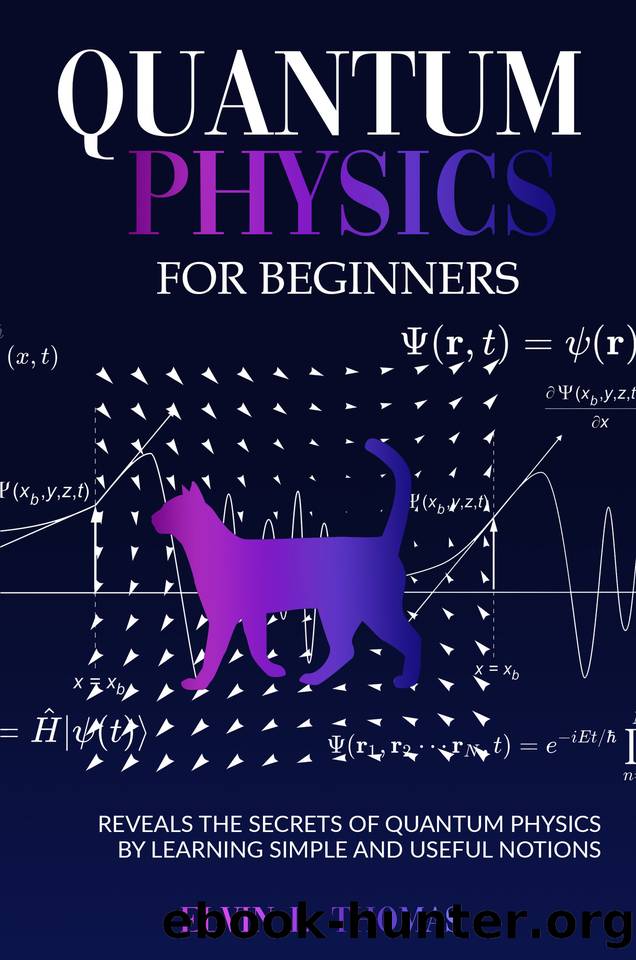Quantum physics for beginners: reveals the secrets of quantum physics by learning simple and useful notions by Elvin L. Thomas

Author:Elvin L. , Thomas [Elvin L. , Thomas]
Language: eng
Format: epub
Published: 2021-05-05T16:00:00+00:00
6.1 Matter Theories at the End of the 19th Century
In the late 19th century, matter was recognized to come in 2 types.
The first; particles, which were little lumps of matter that floated about like small bullets. The electron was the most studied of the basic particles. In 1896, Thomson discovered that the cathode rays used in CRTsâthe predecessor of glass TV tubesâwere diverted by electromagnetic fields just like tiny small chunks of matter which is electrically charged. Atoms, which were made up of a clump of different particles, were thought to be particulate in nature.
The other kind of matter was wavelike. Light, or more broadly, electromagnetic waves, was the one well-studied type. Light, according to Newton and several other scientists in the 17th century, is made up of a storm of little corpuscles. Despite the fact that the wave perspective was also being followed at the time, Newton's corpuscular perspective remained influential. With the discovery of interference by Thomas Young at the turn of the 19th century, that changed.
The two-slit experiment produces the most well-known interruption effect. Light waves (shown as parallel wave fronts traveling up the screen) collide with a barrier that has two holes in it. Secondary waves emit out of the slits and overlap with one another, creating a distinctive cross-hatching design. The ripples cast out by two marbles dropping in the water create the same shapes like those found on the top of a still pond. The way the waves interact is crucial in these interference studies. The trends emerge as a result of the waves' ability to add up in two different forms.
The phases of the waves converge to produce a cumulative wave of higher amplitude in positive interference.
The periods of negative interference will be such that waves deduct and balance each other out.
Both disruptive and positive interference occur in various areas of the area where the waves converge in normal scenarios of interference, like the two-slit tests. As a result, the intricate interference structures can be seen emerging.
If you think about a wave as a displacement in a system, interference results are easy to consider. For e.g., a water tide in the sea has troughs and peaks where the water is moved below and above the mean sea level. When two waves collide and their tops coincide, the effect is a peak that is the sum of their heights. It is a good example of positive interference. When a rise and trough occur at the same time, the two will balance each other out. It is what is known as a disruptive intrusion.
Download
This site does not store any files on its server. We only index and link to content provided by other sites. Please contact the content providers to delete copyright contents if any and email us, we'll remove relevant links or contents immediately.
The Complete Stick Figure Physics Tutorials by Allen Sarah(7264)
Secrets of Antigravity Propulsion: Tesla, UFOs, and Classified Aerospace Technology by Ph.D. Paul A. Laviolette(5237)
Thing Explainer by Randall Munroe(3849)
The River of Consciousness by Oliver Sacks(3498)
The Order of Time by Carlo Rovelli(3097)
How To by Randall Munroe(2969)
A Brief History of Time by Stephen Hawking(2911)
I Live in the Future & Here's How It Works by Nick Bilton(2900)
The Great Unknown by Marcus du Sautoy(2612)
What If?: Serious Scientific Answers to Absurd Hypothetical Questions by Randall Munroe(2587)
Midnight in Chernobyl by Adam Higginbotham(2432)
Blockchain: Ultimate Step By Step Guide To Understanding Blockchain Technology, Bitcoin Creation, and the future of Money (Novice to Expert) by Keizer Söze(2409)
Networks: An Introduction by Newman Mark(2304)
The Meaning of it All by Richard Feynman(2268)
Easy Electronics by Charles Platt(2252)
The Tao of Physics by Fritjof Capra(2204)
Midnight in Chernobyl: The Untold Story of the World's Greatest Nuclear Disaster by Adam Higginbotham(2126)
When by Daniel H Pink(2057)
Introducing Relativity by Bruce Bassett(2048)
